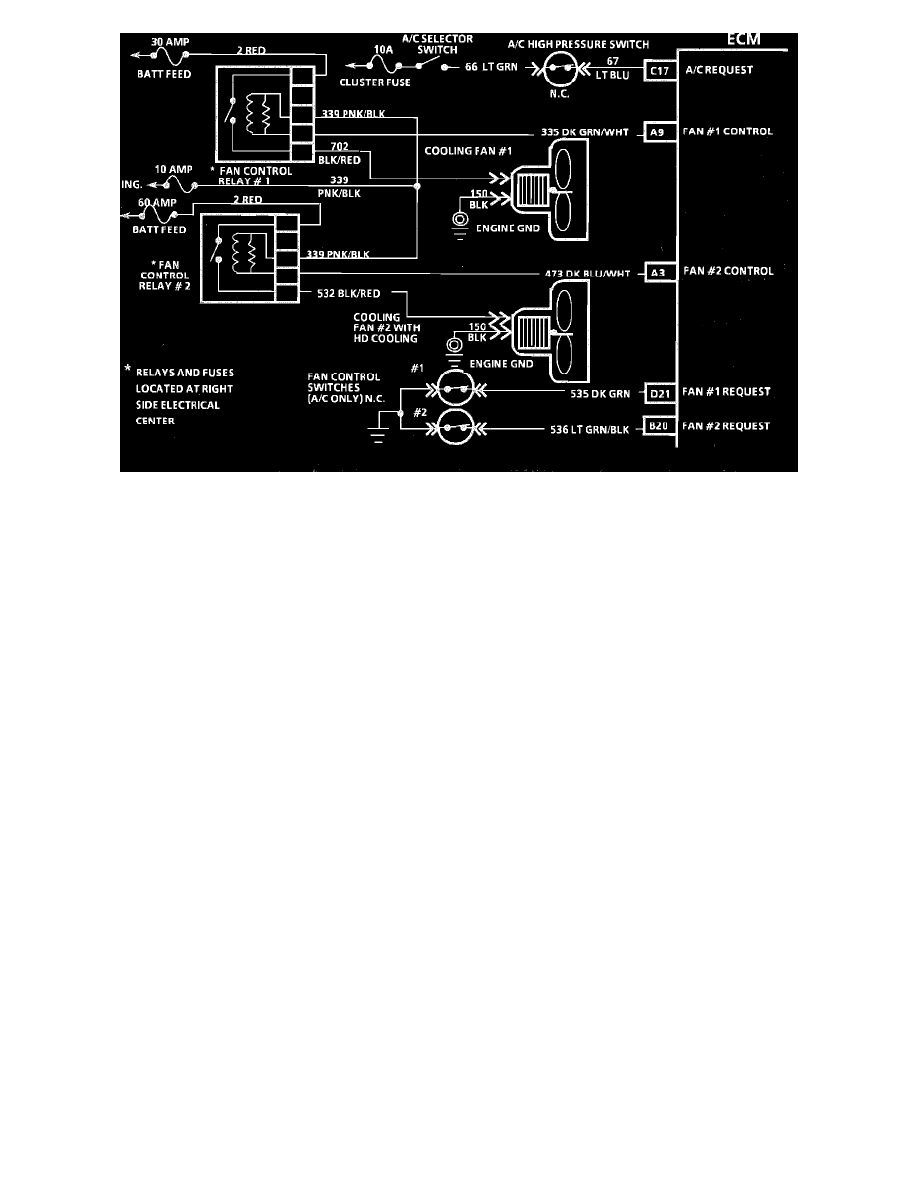Regal V6-173 2.8L (1988)

Wiring Diagram for Chart C-12 - Coolant Fan Control Circuit Diagnosis
CHART C-12 COOLANT FAN CONTROL CIRCUIT DIAGNOSIS
Circuit Description:
The primary and secondary electric cooling fan(s) are controlled by the ECM, based on inputs from the coolant temperature sensor, the A/C control
switches, vehicle speed and state of the A/C intermediate pressure switches. The ECM controls the fan(s) by grounding CKT 335 and/or CKT 473,
which energizes the fan control relay. Battery voltage is then supplied to the fan motor.
The ECM grounds CKT 335 and/or CKT 473, when coolant temperature is over about 106~C (223~F), or when A/C has been requested, and the fan
control switch(s) open with high A/C pressure, about 200 psi (1380 kPa). Once the ECM turns the relay "ON", it will keep it "ON" for a minimum of 30
seconds, or until vehicle speed exceeds 70 mph (40 mph for secondary fan).
Also, if Code 14 or 15 sets, or the ECM is in throttle body back up, the primary fan will run at all times.
Test Description:
Numbers below refer to circled numbers on the diagnostic chart.
1.
With the diagnostic terminal grounded, the cooling fan control driver(s) will close, which should energize the fan control relay(s).
2.
If the A/C fan control switch or circuit is open, the fan would run whenever A/C is requested.
3.
With A/C clutch engaged, the A/C fan control switches should open, when A/C intermediate pressure exceeds about 200 psi (1380 kPa). This signal
should cause the ECM to energize the fan control relay(s).
Diagnostic Aids:
If the owner complained of an overheating problem, it must be determined if the complaint was due to an actual boil over, or the hot light, or temp.
gauge indicated over heating.
If the gauge, or light, indicates overheating, but no boil over is detected, the gauge circuit should be checked. The gauge accuracy can, also, be checked
by comparing the coolant sensor reading using a "Scan" tool and comparing its reading with the gauge reading.
If the engine is actually overheating, and the gauge indicates overheating, but the cooling fan is not coming "ON", the coolant sensor has probably
shifted out of calibration and should be replaced.
If the engine is overheating, and the cooling fan is "ON", the cooling system should be checked.
